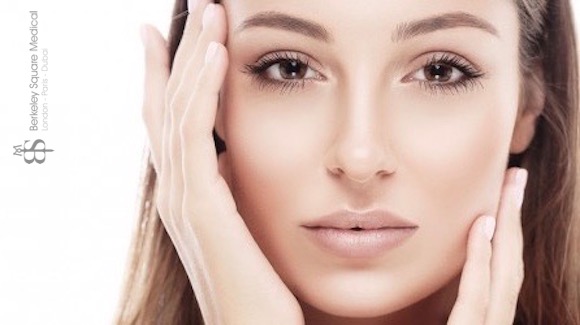
If you’re happy with the shape of your nose overall but feel like the tip is too bulbous, droopy, or undefined, then tip plasty – also known as nose tip surgery or tip rhinoplasty – might be the perfect solution.
In this guide, we’ll explain what nasal tip surgery involves, who it’s right for, how long it takes to recover, and what kind of results and costs to expect in London.
Tip plasty is a focused type of rhinoplasty that reshapes only the tip of the nose — not the nasal bridge or bones.
It’s ideal for refining features like a bulbous, droopy, or over-projected tip without changing the entire nose.
The procedure can be performed using closed or open techniques, depending on complexity and goals.
Recovery is typically quicker and less invasive than full rhinoplasty, with most patients resuming daily activities within 7–10 days.
Tip rhinoplasty techniques include cartilage trimming, sutures, grafts, and tip defatting for thick skin.
Results are tailored to each patient’s facial structure and ethnicity, aiming for a balanced, natural-looking outcome.
Unlike full rhinoplasty, tip plasty focuses only on reshaping the cartilage and soft tissue at the end of the nose. That means no changes to the nasal bones, and a typically quicker, easier recovery. It’s a popular choice for people who want a more refined nose tip without undergoing a full surgical transformation.
This makes it ideal for people who want to:
Slim down a bulbous tip
Lift a droopy nasal tip
Improve asymmetry or definition
Reduce over-projection
Soften a wide nasal base
Because the surgery is focused only on the tip, it’s less invasive than full rhinoplasty – and often comes with fewer risks and a faster recovery. Depending on your anatomy and goals, your surgeon may recommend a closed or open approach, which we’ll explain in the surgical techniques section.
You might be a strong candidate for tip rhinoplasty if you’re mainly unhappy with how the tip of your nose looks, but don’t feel you need changes to the bridge or overall size.
Tip plasty can be an effective standalone procedure, especially if your bone structure is already well balanced. However, it’s not ideal if you’re looking to change the height or shape of the nasal bridge – those concerns usually require a full rhinoplasty.
Ideal candidates for nose tip surgery are typically adults (over 18) who are in good general health, non-smokers (or willing to quit before and after surgery), and have realistic expectations about the outcome.
For patients of different ethnic backgrounds, such as those with naturally thicker skin or weaker cartilage, a skilled surgeon will take these anatomical differences into account when planning the surgery. The goal is always to enhance the natural beauty of the face while preserving or even celebrating ethnic identity.
During a consultation, your surgeon will carefully assess your nasal structure, skin thickness, cartilage strength, and overall facial harmony to determine if tip plasty alone can achieve your desired results.
Nose tip surgery is a precise procedure that focuses entirely on reshaping the nasal tip’s cartilage and soft tissues. Depending on the complexity of the case and the surgeon’s recommendation, tip plasty can be performed using one of two approaches:
All incisions are made inside the nostrils, leaving no external scars. This technique is often used for straightforward cases where less structural change is needed.
A small incision is made across the columella (the tissue between the nostrils), providing the surgeon with greater visibility and control. This is particularly useful for more complex tip reshaping, such as significant refinement of a bulbous or droopy tip.
Tip rhinoplasty is usually performed under general anaesthesia or twilight sedation. The procedure typically takes between 1 to 2 hours, depending on the techniques required. After surgery, patients return home the same day with a splint placed over the nose to protect the new shape during the initial healing phase.
Because the bones are not broken during tip plasty, recovery tends to be quicker and less uncomfortable than full rhinoplasty.
Choosing a surgeon experienced specifically in tip rhinoplasty significantly reduces the risk of complications and ensures the most natural, lasting outcome.
Most patients feel comfortable returning to normal daily activities within 7–10 days. Full recovery and final results can take up to 12 months as subtle swelling fully resolves.
If a closed approach is used, there are no external scars. With an open approach, a very small scar at the base of the nose is typically invisible once healed properly.
Yes, reshaping techniques like cartilage trimming, suturing, and grafting are highly effective in correcting bulbous or drooping nasal tips.
Generally, yes. Since bone work is not involved, the surgery is less invasive, with lower risks and a faster recovery.
Tip rhinoplasty in London typically costs between £5,000–£7,000, depending on the surgeon’s expertise and the complexity of the case.
Light walking is encouraged soon after surgery, but strenuous exercise should be avoided for at least 3–4 weeks to allow proper healing.
If you’re considering nose tip surgery, choosing a highly experienced rhinoplasty surgeon is key to achieving beautiful, natural results.
At Berkeley Square Medical, we specialise in refined, tailored approaches to tip rhinoplasty, helping patients achieve improved facial harmony and confidence.
Contact our team today to book your private consultation and discover how tip plasty could enhance your natural beauty.